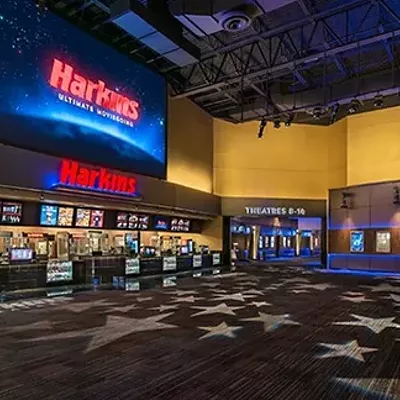In the end, the northwest city chose urbanization; the southwest one continued suburbanization. But for a brief moment, Tucson flirted with addressing leapfrog development.
In 1972, a local Comprehensive Planning Process was begun. Combining the forces of all the governmental jurisdictions in eastern Pima County, the goal was to devise a plan based on public input which would guide growth until the year 2000, when the area was projected to have a population between 1 and 1.4 million.
Based on citizen comments, the process included four alternatives. Included in a 1973 newspaper supplement entitled "Tell Tucson Where to Go," these were:
· Peripheral expansion. By allowing the status quo of unrestrained population increases and scattered new housing developments to continue, it was estimated the community would grow from 260 to 750 square miles in size.
· Activity centers. Through use of intense zoning around major street intersections, commercial, office and higher-density residential uses would be concentrated at specific locations across town.
· Contained growth. Establishing and enforcing a growth boundary to encircle Tucson, this option was intended to eliminate the prevalent leapfrog pattern of development.
· Satellite cities. The towns of Oracle, Green Valley and Benson were possible candidates for huge increases in population while steps would be taken to ensure the land between them and Tucson was not developed.
When the initial draft of the 561-page plan was finally released in 1975, it sent shock waves through the Tucson establishment. The proposal recommended managing the rate of growth so the population in 2000 would not exceed 800,000 people. It also suggested having future construction only occur within a 300-square-mile area containing numerous activity centers.
In addition, the draft CPP document called for new development to pay its own way while focusing taxpayer-funded infrastructure improvements at the core of the community. Other ideas were that Central Arizona Project water not be imported into Tucson; government support for tourism and economic development would be ended, and a decreasing reliance would be placed upon the automobile.
Not surprisingly, the community's power structure was outraged. Calling the plan "dangerous" and "dictatorial," they labeled the planners who had prepared it "socialists." Led by home builders, car salesmen and bankers, Tucson's elite fought back by charging that implementation of the plan would stop population growth, make housing more expensive and ruin the local economy.
One Tucson City Councilmember who vehemently opposed the plan said: "We have the greatest lifestyle in the history of mankind right here in Tucson." He also unsuccessfully suggested firing the entire city Planning Department for helping prepare the draft.
Within a year, the initial plan had been revised, and it took no stand on growth. Later in 1976, based on the City Council's policy toward the price of water (See "Down the Drain," Jan. 16, 1997), a recall movement was started against four of the council members who supported the Comprehensive Planning Process. One of the successful recall candidates said before the special election that he opposed any restraint on development around Tucson.
After the new council took their seats, the comprehensive plan was whittled down into a meaningless 50 pages of pabulum. The local status quo toward population growth and leapfrog development would continue.
A few years later, the voters of Portland adopted a growth-management boundary. Today, Portland has a population of more than 1.3 million people within its 369-square-mile region. Known for its quality of life, high home prices, successful central city and extensive mass-transit system, Portland is often listed as one of the finest places to live in America--for those who can afford it.
The 900,000 or so residents of greater Tucson are now spread out across more than 600 square miles of desert. Housing is relatively affordable in this low-wage town. Meanwhile, downtown boosters hope the Rio Nuevo project works to revive the struggling city core, and an automobile seems like an absolute necessity to get around.
While people keep flocking to Tucson, the climate and the community's natural setting appear to be the key attractions in bringing them here.










